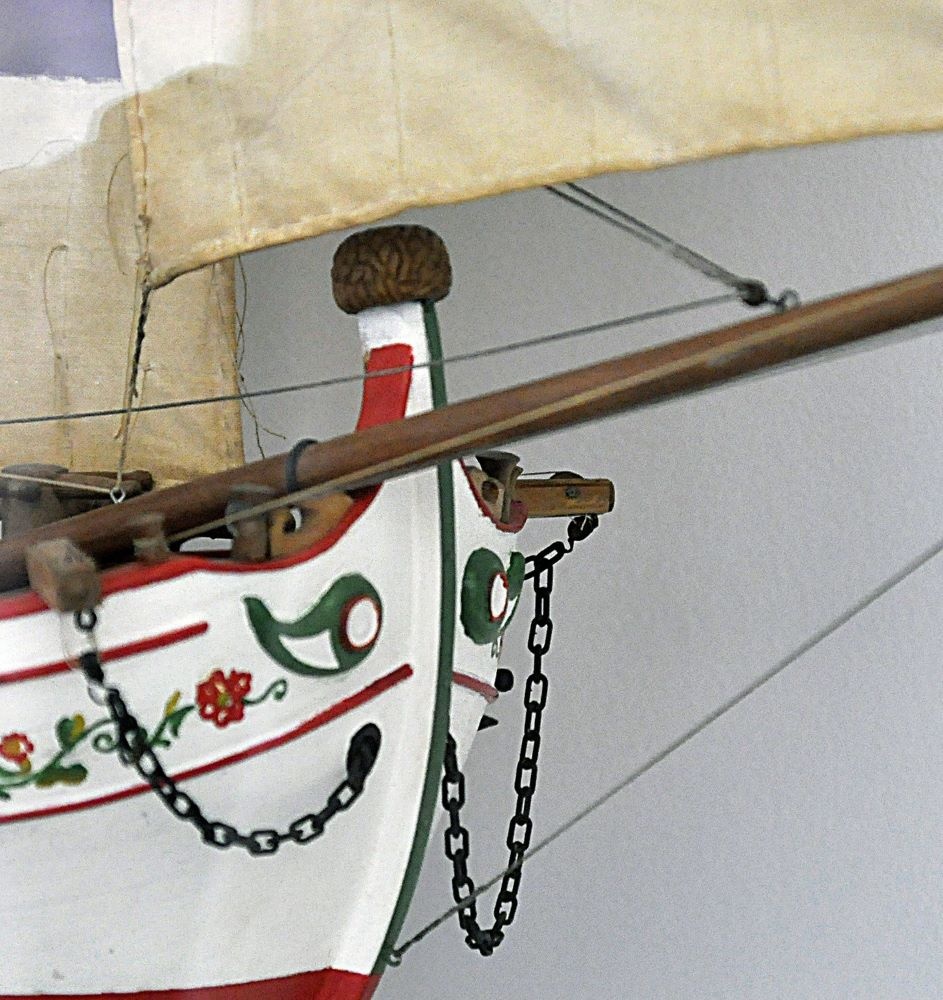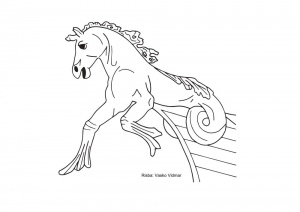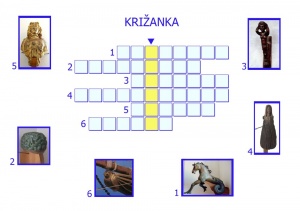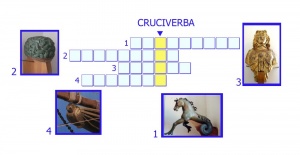The story of the figurehead
The Maritime Museum Piran has a collection of figureheads on display, with Medusa holding a very special place - a gilded wooden figurehead with a sinister look and a head with writhing snakes.
Let's have a look at the sea, which at times seems so calm, magical and almost infinitely large, but also rages menacingly here and there and is not stable at all. It is not strange, therefore, that ancient civilizations from China and Babylon to Greece and Rome, who believed that they lived in the centre of the world surrounded by water, erected magnificent temples to water gods such as the Roman Neptune and the Greek Poseidon.
And what about the daring sailors? How did they win the favour of the sea forces and the gods when setting sail from the safe haven of their home port into the unknown with either precious cargo to distant places, or just to catch fish for dinner?
During their voyages, they were aided (and in some places still are) by figureheads. These are the wooden statues fixed on the ship's bow, bravely staring into the waves ahead. They often look terrifying in their form of warriors, dragons or various monsters, which should scare away the evil spirits of the sea and human enemies. But they may also embody gentler creatures, mythological creatures associated with the sea and voyages, as well as ship owners and their beliefs, or various objects associated with the ship. They have been known since ancient times, the most famous among them being the Norman or Viking ships with dragons. Sailors always attentively guarded their figureheads, since a damaged sculpture would bring misfortune to the entire crew.
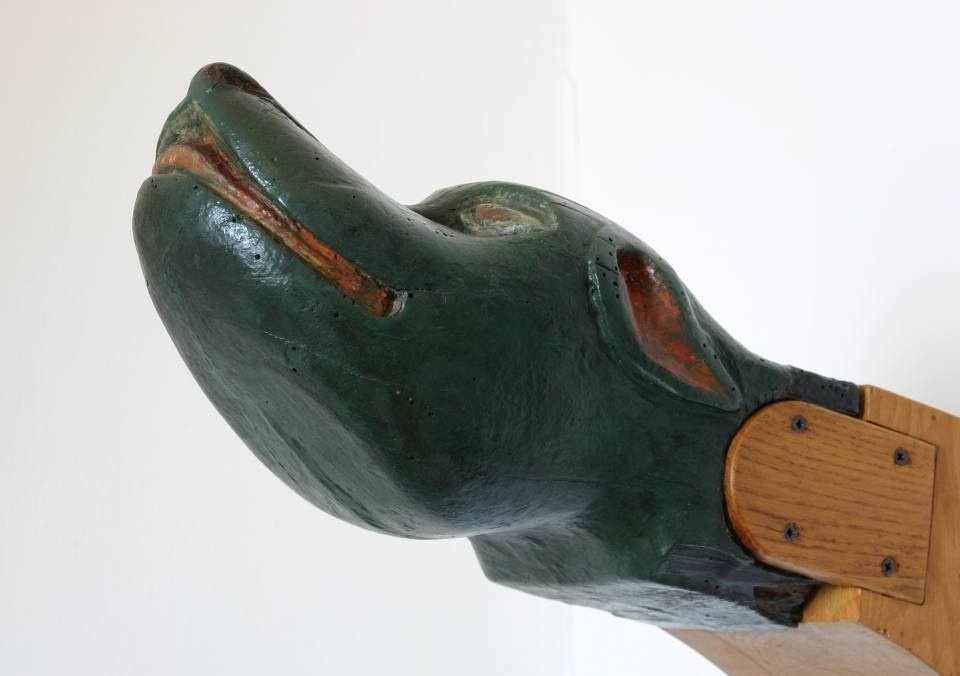
More about figureheads and how sailors helped themselves calming the sea you can find here:
https://pomorskimuzej.si/en/polene-and-ex-voto
Here you can have a look at some pictures of interesting figureheads held in the museum:
https://pomorskimuzej.si/en/digital-collections/collection-of-figureheads
Medusa, a figurehead that met the pirates
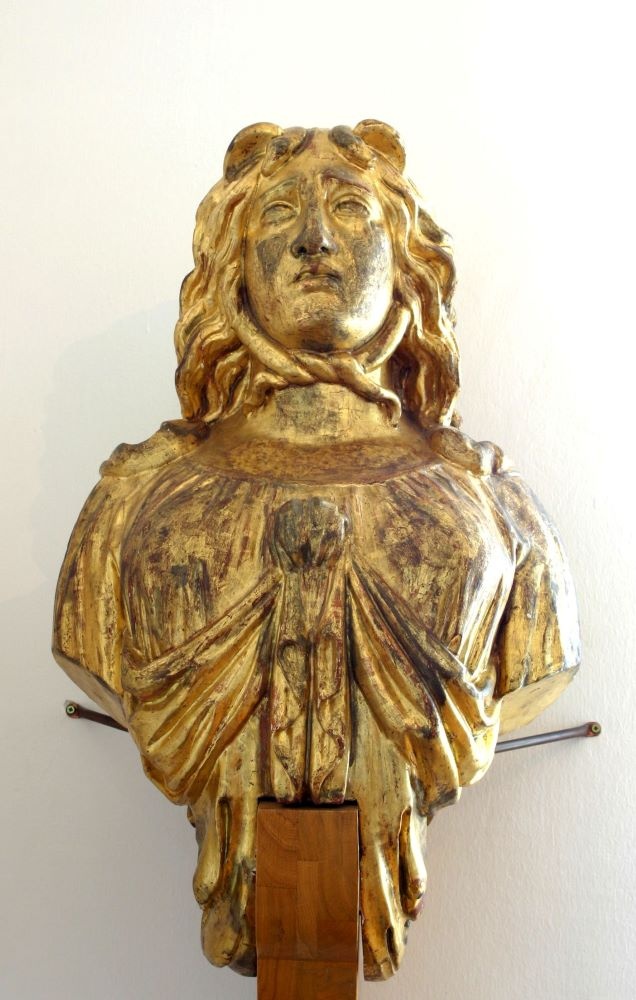
The Maritime Museum Piran has a collection of figureheads on display, with Medusa holding a very special place - a gilded wooden figurehead with a sinister look and a head with writhing snakes. She was part of a Koper sailing ship which, according to records, experienced a special adventure. Are you interested what kind of adventure this was?
Here, you can read the following:
Nobody knows whether Medusa helped the crew with her staring gaze to protect the precious cargo.
The story or myth of Medusa
Medusa was one of the three Gorgon sisters with terrifying appearance: they had giant heads, with snakes coiled around them instead of hair. Their teeth were as long as boar's fangs, and they were flapping their golden wings in the air. With their huge eyes they turned anyone who looked at them to stone. Only Medusa was mortal among the three sisters, and according to one of the stories, Perseus killed her with Athena's help by cutting off her head, which then adorned Athena's shield - the aegis, and drove her enemies to flight.
According to a local legend, the story could also continue in Koper, where Athena and Poseidon allegedly quarrelled near the Rižana River - as they had done several times before. During the scuffle, Athena's shield with Medusa's head fell into the sea and turned into an island, on which the city of Koper grew. In some Koper coats of arms, Medusa can thus be seen instead of the Sun.
Crossword puzzle

The figurehead is an ornamental symbol or figure placed on some prominent part of a ship. But how do we call this part of the ship? Solve the crossword and you will get the answer. Write the names of the figureheads from the Piran Maritime Museum in the correct places. A little hint: in the museum we keep (among others) figureheads of the Golden Fleece, the warrior, the Nereid, the Medusa, the hippocampus seahorse, the sea monster, Saint Mary, and the little owl on a ship model.
Anagram
The Golden Fleece is golden sheep fur. An ancient Greek myth says, that a group of men led by Jason set out to find it. Their route to the Black Sea also led them through our regions. What were they called? Their name is hidden in TAUROGANS.
Colouring book
Seahorse - the hippocampus from the museum is the colours of seaweed and sea foam. Which colour would have, in your opinion, the best effect on sea deities? Colour the seahorse as you like.
Make your own figurehead
Now look at the sea and indulge your imagination: transfer yourself in any time and place and set out on a special voyage of your choice - only you know what kind of voyage this will be. All that matters is that you travel with a ship equipped with a figurehead. You can draw or describe the ship or part of the voyage and send it to bizjak.marusa@guest.arnes.si with the title Svetilnik – Zgodba o poleni (Lighthouse - The story of the figurehead). It may happen that we shall publish your story or the drawing on the museum's website!
Did you know:
• That the vessel "Corriere d'Egitto" carrying the Medusa figurehead was a cargo sailing ship of the brig type? It was owned by the famous Koper captains, the Nazario and Domenico Zetta brothers. Their ships sailed between Trieste and Egypt and the Middle East in the first half of the 19th century. The portrait of Nazario Zetta can be seen in the Koper Regional Museum. It was painted by Jožef Tominc, a painter from Gorica.
• That the story of Medusa was published almost a century later, in 1911, during the presentation of figureheads at the First Istrian provincial exhibition in Koper in the newspaper "Pagine Istriane" by Francesco Majer, high school professor and the first director of the City Archives and Library in Koper?
• That Athena was also the protector of children?
• That the small owl in the picture came from a steamship called Civetta (Little Owl). The Maritime Museum Piran holds a model of this ship, which has an interesting story, too. All types of ships used to be equipped with figureheads: fishing ships, cargo ships, warships and pirate ships.
• That the name "hippocampus" (literally in Greek: hippos – horse, kampos – sea monster) is in fact the Latin name for a seahorse, after which part of the brain of a similar shape is also named, which plays an important role in interpreting information from short-term to long-term memory as well as spatial memory. In Greek mythology, the hippocampus delineates half-horse, half-fish. According to some versions, such creatures allegedly pulled Poseidon's chariot, with Poseidon also being the god of horses.
• That the Nereids, daughters of the sea god Nereus, were a sort of mermaids - half women, half fish.
• That the story of the Gorgon sisters is an old Greek myth, and that the Koper story of Medusa is a legend born several centuries ago. Myths are usually very old and symbolically rich narratives, while legends are stories about people or places passed down from generation to generation.
